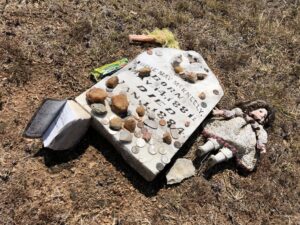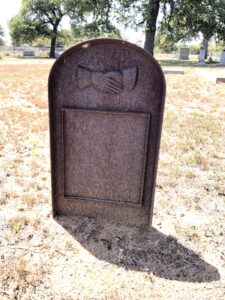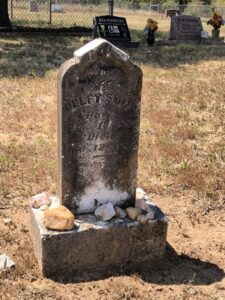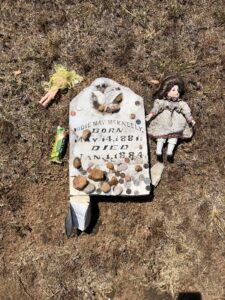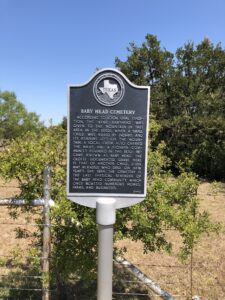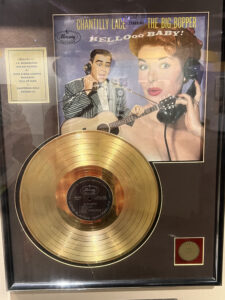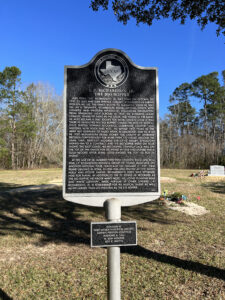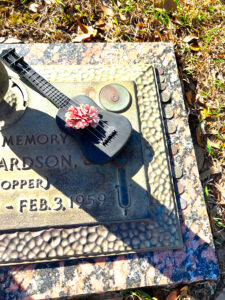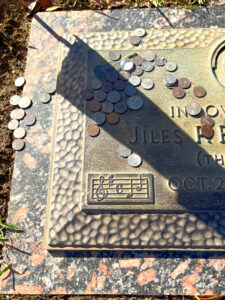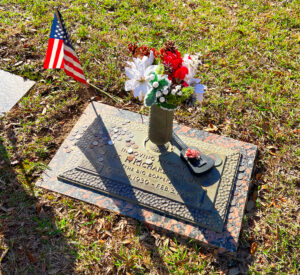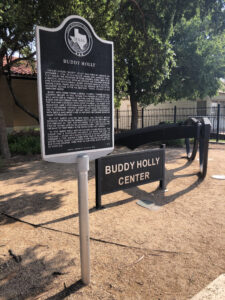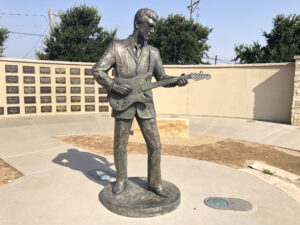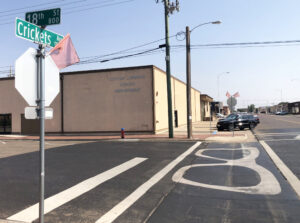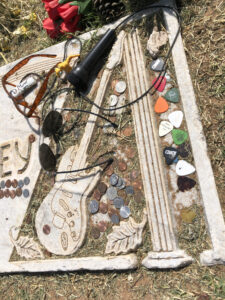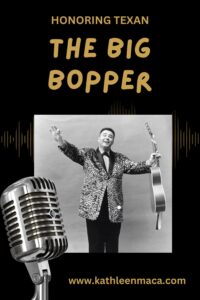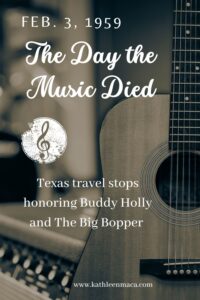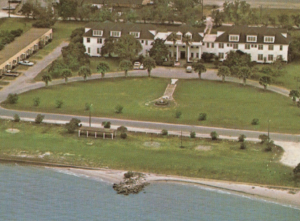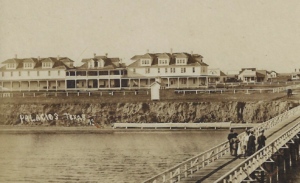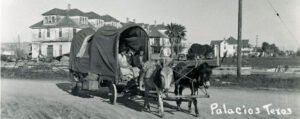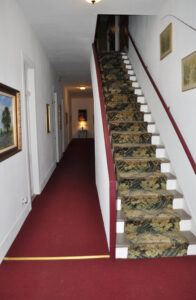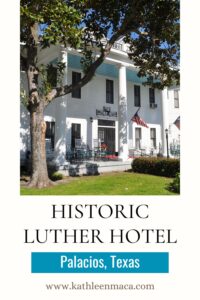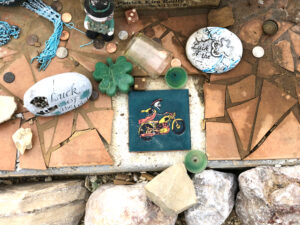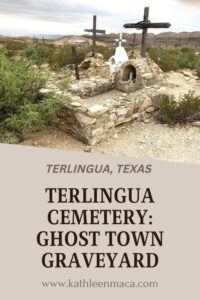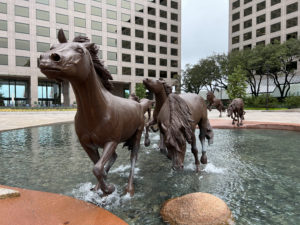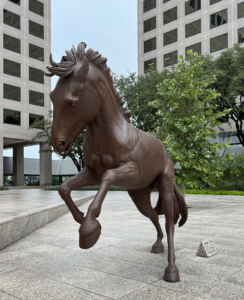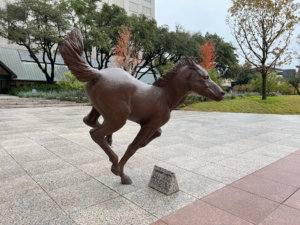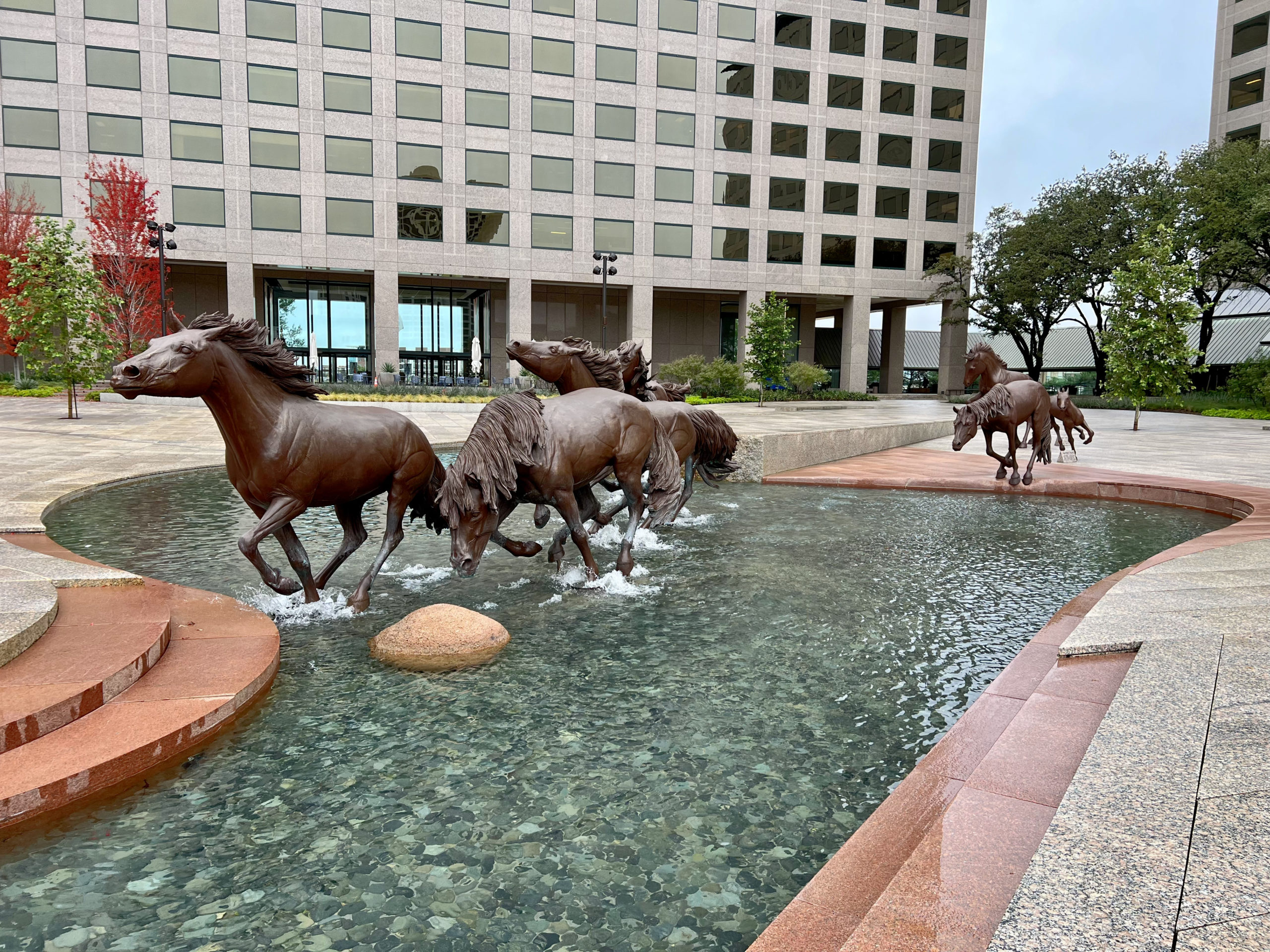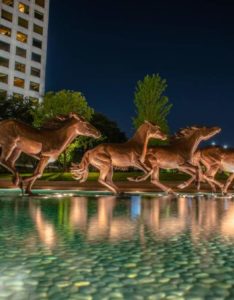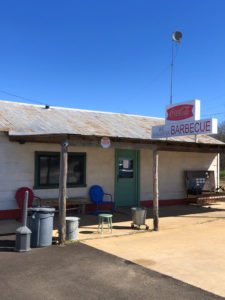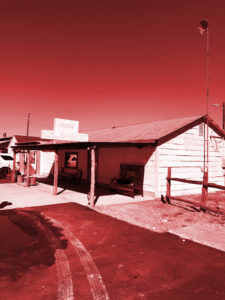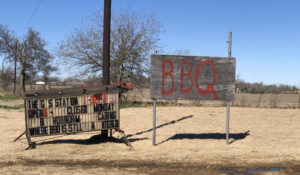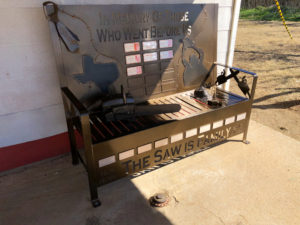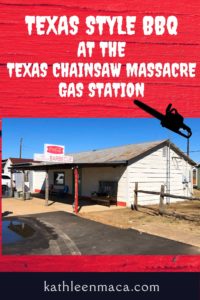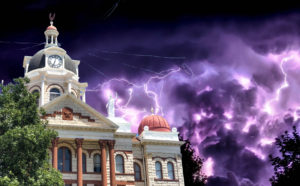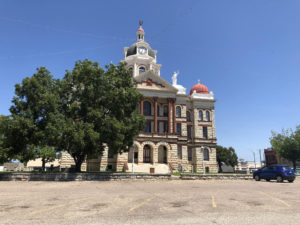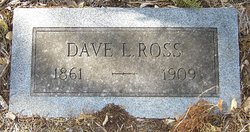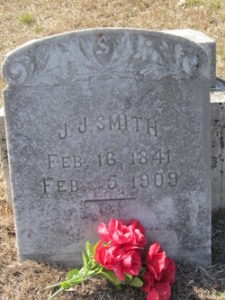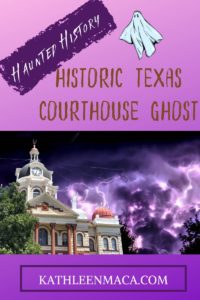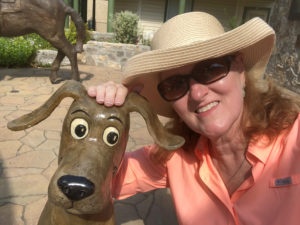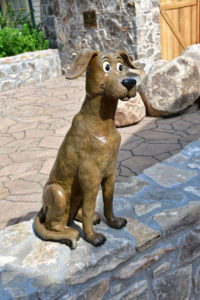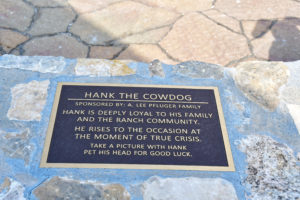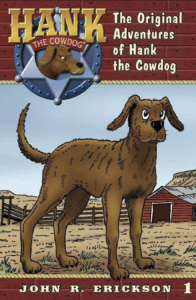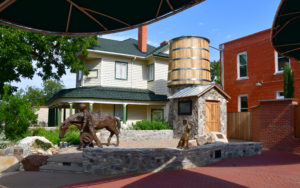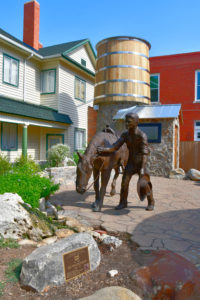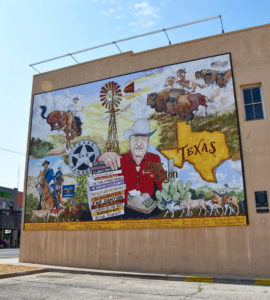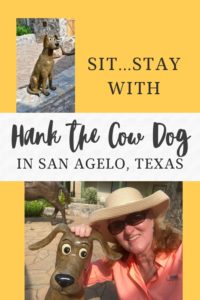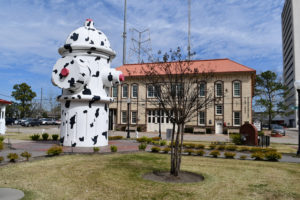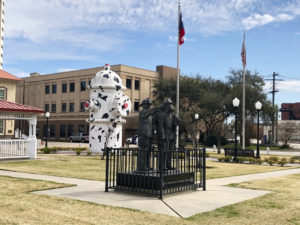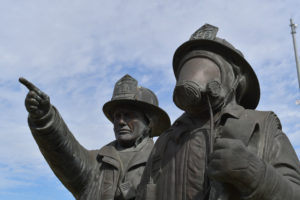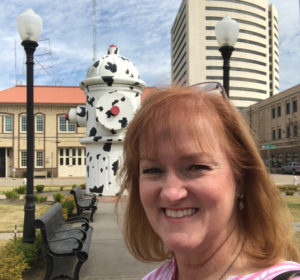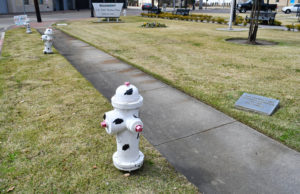Category: Roadside Attraction
Texas Ties: The Day the Music Died
A turning point in rock and roll history that Don McLean sang about in his song American Pie has strong ties to Texas. It was the “Day the Music Died,” when rock legends Buddy Holly, Ritchie Valens and Jiles Perry Richardson – better known as “The Big Bopper” – were lost in a tragic plane crash.
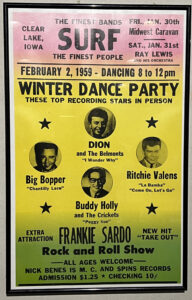
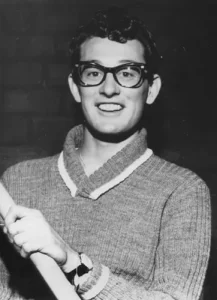 Richardson, Valens and Holly were performing on a concert tour called the “Winter Dance Party,” that started in January 1959 with Dion and the Belmonts. It wasn’t very well organized and the musicians traveled from town to town in a reconditioned school bus – remember the ones with no heating? It wasn’t a great time of year to be traveling in one of those! The bus was so cold that the men often huddled together under blankets to share warmth. Holly’s drummer Carl Bunch suffered frostbite on his feet and had to miss the performance that would be Holly’s last.
Richardson, Valens and Holly were performing on a concert tour called the “Winter Dance Party,” that started in January 1959 with Dion and the Belmonts. It wasn’t very well organized and the musicians traveled from town to town in a reconditioned school bus – remember the ones with no heating? It wasn’t a great time of year to be traveling in one of those! The bus was so cold that the men often huddled together under blankets to share warmth. Holly’s drummer Carl Bunch suffered frostbite on his feet and had to miss the performance that would be Holly’s last.
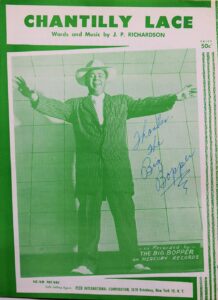 Between the unbearable cold, sleepless nights and lack of clean clothes (the guys were never in one town long enough to take care of the chore) Holly decided he’d had enough after their show in Clear Lake Iowa, and rented a private plane for $108 to fly he and his bandmates – guitarist Tommy Allsup and bassist Waylon Jennings (yep -THAT Waylon Jennings!) – to their next concert date in Minnesota. They even took everyone’s laundry with them on the plane.
Between the unbearable cold, sleepless nights and lack of clean clothes (the guys were never in one town long enough to take care of the chore) Holly decided he’d had enough after their show in Clear Lake Iowa, and rented a private plane for $108 to fly he and his bandmates – guitarist Tommy Allsup and bassist Waylon Jennings (yep -THAT Waylon Jennings!) – to their next concert date in Minnesota. They even took everyone’s laundry with them on the plane.
But then a serious of events took place – some understandable, some quirky – that led to disaster.
As the threesome were loading into a station wagon to drive to the airport just after midnight, Holly asked Jennings to run back into the Surf Ballroom to confirm they had all of their gear. Jennings ran into Richardson who had been battling a terrible cold, and agreed to let him ride on the plane instead. Jennings went to the car to retrieve his bag and tell Holly about the switch, and Holly joked that he hoped he would freeze on that bus. Jennings joked back that he hoped the plane would crash. A quip he would later regret.
 In the meantime, Valens had repeatedly asked Allsup if he could have the other seat on the plane, but was turned down. Worn down after Valens pleas, Allsup finally said he would flip a coin to see who got the last seat on the plane. Valens chose “heads,” and won the seat.
In the meantime, Valens had repeatedly asked Allsup if he could have the other seat on the plane, but was turned down. Worn down after Valens pleas, Allsup finally said he would flip a coin to see who got the last seat on the plane. Valens chose “heads,” and won the seat.
Just after 1 a.m. on February 3, 1959 in 15° weather, the three passenger Beechcraft Bonanza took off with Buddy Holly, 22; Ritchie Valens, 17; J. P. “The Big Bopper” Richardson, 28; and 21-year old pilot Roger Peterson. Though the pilot had been flying for four years, it was later thought that he didn’t have the experience necessary to fly into the oncoming blizzard conditions.
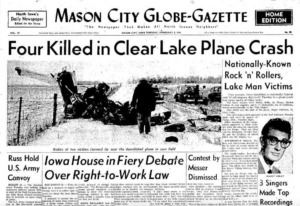
The aircraft crashed into a field five miles away.
In the 12 months before the plane crash the three musicians combined had sold over 10 million albums.
Buddy Holly and The Big Bopper were both Texans, and here are a few Lone Star State sites you can visit to celebrate their memory:
PORT ARTHUR
Museum of the Texas Gulf Coast
Among the exhibits in the halls of this museum is an impressive Music Hall that includes items from The Big Bopper’s career, and the Winter Dance Party tour.
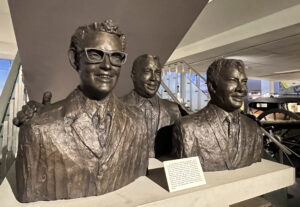
BEAUMONT
Forest Lawn Memorial Park Cemetery
LUBBOCK
Buddy Holly Center
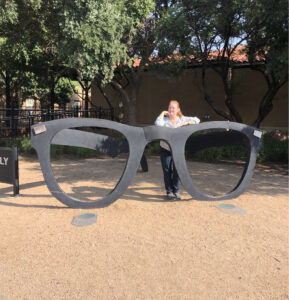 Large black Holly-style glasses and historical marker outside of the Buddy Holly Center, which contains the Buddy Holly Gallery and the most extensive collection of Buddy Holly artifacts in the world.
Large black Holly-style glasses and historical marker outside of the Buddy Holly Center, which contains the Buddy Holly Gallery and the most extensive collection of Buddy Holly artifacts in the world.
Eight and a half foot tall statue of the musician on
Cricket Street between 18th and 19th Streets.
Crickets Avenue (named after band Buddy Holly was in) and
glasses crosswalk at intersection of 18th Street.
Lubbock City Cemetery
As you enter the cemetery, follow signs to the resting place of Charles Hardin “Buddy” Holley. The the Holley was shortened to Holly for the stage.
Have you ever planned a trip around music history? Texas has plenty to offer!
Losing a Historical Treasure: Palacios’ Luther Hotel
 The phrase “seaside resort” brings to mind elegant escapes to the shore to listen to the waves break and take in the warmth of the sunshine. And people have been doing just that at The Luther Hotel in Palacios since it was bult in 1903.
The phrase “seaside resort” brings to mind elegant escapes to the shore to listen to the waves break and take in the warmth of the sunshine. And people have been doing just that at The Luther Hotel in Palacios since it was bult in 1903.
 The Luther Hotel holds a unique place in Texas history as well as in the hearts of generations of visitors and their families whose generations have stayed there across 100 years. It’s one of the few surviving Gulf Coast hotels built to attract tourists in the early 20th century.
The Luther Hotel holds a unique place in Texas history as well as in the hearts of generations of visitors and their families whose generations have stayed there across 100 years. It’s one of the few surviving Gulf Coast hotels built to attract tourists in the early 20th century.
Small towns started popping up in Matagorda County along the railroad lines that arrived in the area in the earliest part of the 20th Century– Blessing (see my Blessing post here), Van Vleck, Midfield, Cortes, Buckeye, Markham, Big Hill, and of course Palacios.
Victoria architect Jules Leffland designed the hotel, which was constructed by contractor D. D. Rittenhouse. Longleaf yellow pine for the framing and cypress for the siding were brought from Louisiana via Southern Pacific Railroad for the project. The Rittenhouse family and construction crews lived in tents on the land while the hotel was being constructed.
When the building was finished, it was named the Bay View Hotel and though it only had sixteen rooms, it was advertised as having accomodations for 100 guests. What we now see as the center section of The Luther was the original Bay View.
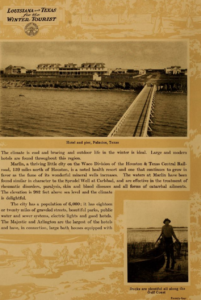
The number of visitors to Palacios grew exponentially in the next two years, enticed by “excursion rates” from the railroads and advertisements about the mild winters on the Texas coast. Yep, “Winter Texans” existed back then too.
In 1905, owners of the hotel decided to move it one half mile from its East Bay location to South Bay Boulevard to be closer to a new dance pavilion (also designed by Leffland) being built over the water. In order to do that, the original porches and chimney were removed and the structure was cut into three parts to be pulled by mule teams to its new location.
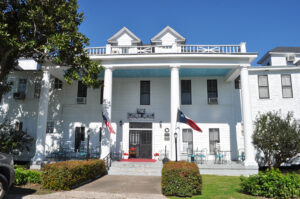 It was re-assembled and extended with east and west wings. That’s also when the 300-foot long porch, known as the “Longest Front Porch in Texas” were added.
It was re-assembled and extended with east and west wings. That’s also when the 300-foot long porch, known as the “Longest Front Porch in Texas” were added.
In addition, it acquired a dining room on the north side of the lobby, with a separate kitchen and a laundry building.
Such a grand place was worthy of a new name, and Hotel Palacios was chosen.
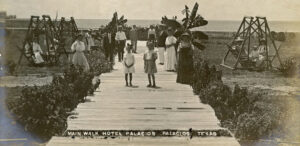 Thousands of visitors came to enjoy the surf bathing, warm weather, fishing, boating, lawn tennis and dancing on the pavilion. Meals in the dining room were served on Haviland china and silver, and a permanent orchestra provided music during lunch, dinner and for Sunday concerts.
Thousands of visitors came to enjoy the surf bathing, warm weather, fishing, boating, lawn tennis and dancing on the pavilion. Meals in the dining room were served on Haviland china and silver, and a permanent orchestra provided music during lunch, dinner and for Sunday concerts.
 A “Box Ball Alley” was built in 1913 that provided guests with alleys, pins and a ball to try their hand at a sport similar to bowling.
A “Box Ball Alley” was built in 1913 that provided guests with alleys, pins and a ball to try their hand at a sport similar to bowling.
Natural resources were used for the hotel, including water from an artesian well behind the structure piped into the building, and lighting was powered by gas generated on the land.
A string of owners and managers, some more conscious than other about upkeep of the property, maintained the hotel in the next few years though it remained a center of local social life.
 Charles and Elsie Luther purchased the run-down hotel in 1936 and undertook a massive renovation, which began with tearing down the old dining room and kitchen. The impressive porch was also removed, but its cypress lumber was saved and used as the foundation for an 11-room tourist court motel on the west side of the property.
Charles and Elsie Luther purchased the run-down hotel in 1936 and undertook a massive renovation, which began with tearing down the old dining room and kitchen. The impressive porch was also removed, but its cypress lumber was saved and used as the foundation for an 11-room tourist court motel on the west side of the property.
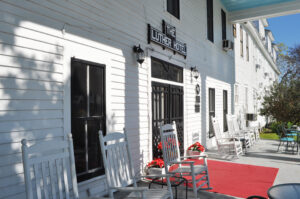 Five years later in 1941, the work was complete with structural strengthening, new wiring and plumbing and the installation of private bathrooms for each guest room. The breezeways between the central building and the east and west wings were enclosed, and a handful of rooms were turned into apartments for families of soldiers at Camp Hulen.
Five years later in 1941, the work was complete with structural strengthening, new wiring and plumbing and the installation of private bathrooms for each guest room. The breezeways between the central building and the east and west wings were enclosed, and a handful of rooms were turned into apartments for families of soldiers at Camp Hulen.
The historic hotel reopened to the public on April 20, 1941 (the owners’ 20th wedding anniversary) as The Luther Hotel. Since then it has survived many hurricanes, including Carla in 1961, as well as a severe fire in 1944.
The “stars were bright” at the Luther, too! Numerous celebrities stayed at The Luther while in the area doing shows at Camp Hulen, making movies or on press trips, including Shirley Temple, Rita Hayworth, Carole Landis, Artie Shaw, Harry James, Lyndon Baines Johnson (a family friend of Elsie Callaway Luther), actor John Schneider, and others.
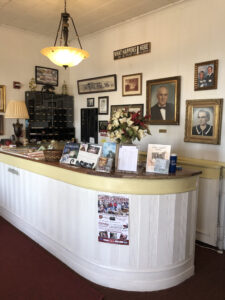 The sign at the front desk stated, “He who enters here is a stranger but once” and there were many who agreed. Throughout the 1970s and 80s the hotel often operated at full capacity, especially during the winter months when it became home for several Canadians and a Minnesota family who called it their winter home for twenty years.
The sign at the front desk stated, “He who enters here is a stranger but once” and there were many who agreed. Throughout the 1970s and 80s the hotel often operated at full capacity, especially during the winter months when it became home for several Canadians and a Minnesota family who called it their winter home for twenty years.
The Luther received its designation as a Recorded Texas Historic Landmark in 1965, over half a century ago. The United States Department of the Interior placed The Luther Hotel on the National Register of Historic Places in 2010.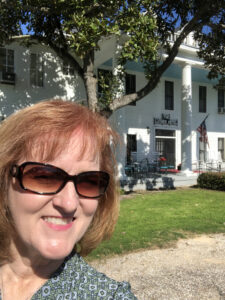
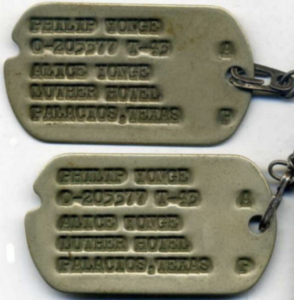 I visited the Luther on my birthday (January 12) in 2019, just months before the motor court wing that was built from the cypress of the original hotel porch was torn down, due to neglect. The manager was kind enough to show me a room filled with memorabilia from the hotels history. Autographed photos from celebrities, dog tags of soldiers from Camp Helen who used to live there, and even a letter from LBJ. I could have spent months combing through everything, and had hoped at one point to be able to return to do just that.
I visited the Luther on my birthday (January 12) in 2019, just months before the motor court wing that was built from the cypress of the original hotel porch was torn down, due to neglect. The manager was kind enough to show me a room filled with memorabilia from the hotels history. Autographed photos from celebrities, dog tags of soldiers from Camp Helen who used to live there, and even a letter from LBJ. I could have spent months combing through everything, and had hoped at one point to be able to return to do just that.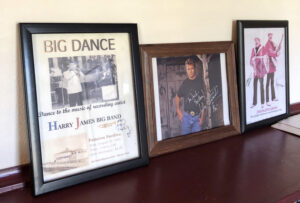
The hotel remained in the Luther family until the passing of Jack Findlay, the last family caretaker, in 2020. Surviving family members sold the hotel to the Ed Rachal Foundation from Corpus Christi, and the agreement states that the property must be demolished. The foundation is not interested in restoration.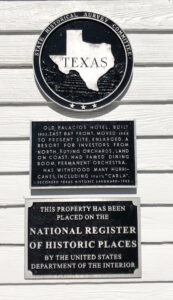
The Luther Hotel, which would have celebrated its 120th Anniversary this year will most likely not survive to celebrate that landmark.
If you are interested in expressing your views or concern over losing this piece of Texas history, you’re encouraged to contact:
Board of Directors, Ed Rachal Foundation, 555 N. Carancahua Street #700, Corpus Christi, Texas 78401
Or sign the online petition to save/repurpose the hotel at: https://www.change.org/p/save-the-luther-hotel-in-palacios-texas?source_location=topic_page
Let’s hope that we, as Texans, don’t continue to dismiss the importance of valuing and saving our history for future generations.
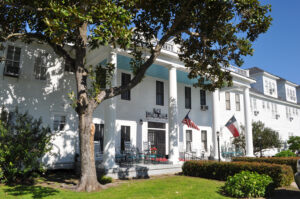
Juliff’s Diddy Wah Diddy Past
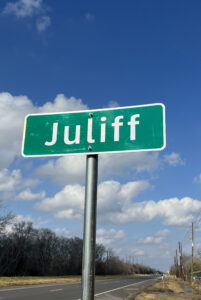 Ever see something that brings a song to mind? Well, back in the day when people saw the sign for Juliff Texas about 20 miles east of Richmond, they probably continued along singing a ditty about a diddy.
Ever see something that brings a song to mind? Well, back in the day when people saw the sign for Juliff Texas about 20 miles east of Richmond, they probably continued along singing a ditty about a diddy.
What? Well, like most things, there’s a story there.
In 1933 a few enterprising citizens opened a dance hall and several taverns right along the railroad line in town. The drinking, gambling and . . . well . . . working women . . . that followed made this little town a pretty rowdy place. But it helped them get through the Great Depression.
Inspired by the female professionals, a local musician wrote a song in 1934 called “Diddy Wa Diddy” that was supposedly about Juliff. In part it went, “I got a gal down in Diddy Wah Diddy. Ain’t no town an it ain’t no city.” Some even suggested changing the name of the town to Diddy Way Diddy (I kind of wish they had!), but that was probably after they’d enjoyed themselves a bit too much at the saloons.
Juliff, a shipping point on the Brazos River, was born on land that was originally part of the antebellum Arcola plantation. It was named for early settler John J. Juliff – “Triple J” to his friends. The town earned a post office in 1891 and by 1896 had its own general store. Business wasn’t steady in the community, and the post office closed in 1908 – only to reopen in 1914 and then – yup – close again in 1958
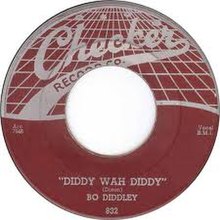 But what about the song? It was recorded by countless artists including Bo Diddley (which I guess would be Diddley’s version of Diddy) through the years.
But what about the song? It was recorded by countless artists including Bo Diddley (which I guess would be Diddley’s version of Diddy) through the years.
The playful wording was likely inspired by a 1929 tune by Arthur “Blind” Blake from Florida, whose song was also named Diddy Wah Diddy, but had different lyrics. It wasn’t the only time the phrase was “borrowed” for a song.
Here are a few of the words from Juliff’s own version:
“… I gotta gal down in Diddy Wah Diddy
(Diddy Wah)
Ain’t no town an it ain’t no city
(Diddy Wah)
She loves her man, just is a pity
Crazy ’bout my gal in Diddy Wah Diddy
… This little girl is sweet as she could be
(Diddy Wah)
I know she’s in love with me
(Diddy Wah)
A lovely face, she’s so pretty
(Diddy Wah)
But she’s still way down in Diddy Wah Diddy
… Ain’t no town, an it ain’t no city
But oh, how they love in Diddy Wah Diddy
… She kissed me all the time
(Diddy Wah)
She gonna turn me outta my mind
(Diddy Wah)
Anything, she says she’s ready
(Diddy Wah)
Run right back to Diddy Wah Diddy
(Diddy Wah)
(Diddy Wah)
(Diddy Wah)
(Diddy Wah)
… Ain’t no town, ain’t no city
Lord, how they love in Diddy Wah Diddy
… Diddy Wah
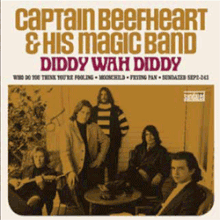 If you want to hear audio of the song, click HERE for a link to the 1960s version by Captain Beefheart and his Magic Band. Yes, really.
If you want to hear audio of the song, click HERE for a link to the 1960s version by Captain Beefheart and his Magic Band. Yes, really.
One of the lines of the song might hide a reason for the fate of the decline of Juliff: “Everybody would live in Diddy Wa Diddy – if only it wasn’t so hard to find.”
And that’s how the small town became connected with the jaunty tune. The next time you zoom through Juliff, hum a little diddy to let John Juliff you heard about the good old days in town.
Terlingua Cemetery: Ghost Town Graveyard

Welcome to Terlingua Cemetery, in Terlingua Texas.
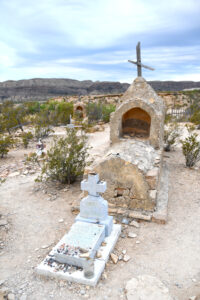 To those who are more accustomed to manicured cemeteries with vast green lawns, this place appears to be abandoned, but Terlingua cemetery is still in use today.
To those who are more accustomed to manicured cemeteries with vast green lawns, this place appears to be abandoned, but Terlingua cemetery is still in use today.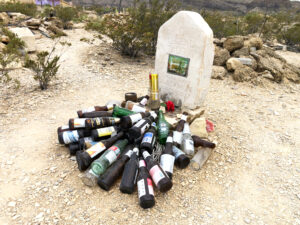
It’s one of the most photographed graveyards in the state of Texas, which should come as no surprise.
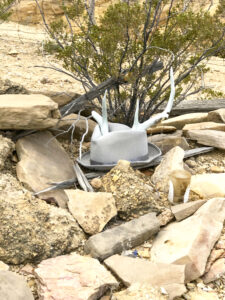 I’ve wanted to visit this amazing burial ground since I was a child, so to have the opportunity to roam through it – left alone with my thoughts and wonder about those who rest here – was a true privilege. There are the well-known, the unknown and the surprise of finding the grave of someone I knew personally in college. It was an astounding experience.
I’ve wanted to visit this amazing burial ground since I was a child, so to have the opportunity to roam through it – left alone with my thoughts and wonder about those who rest here – was a true privilege. There are the well-known, the unknown and the surprise of finding the grave of someone I knew personally in college. It was an astounding experience.
Terlingua was one of the most remote areas in North America at the time it was founded. It still remains set apart from more populated areas.
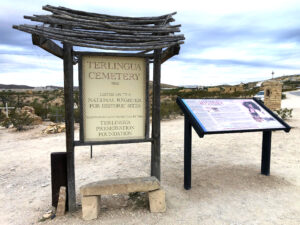 The cemetery encompasses one acre in the Terlingua Ghost Town – which isn’t really a ghost town at all. True . . . the town used to be the site of a quicksilver mining camp and place where desert folk called home beginning in the 1880s, but it’s now more of an artist community and a low key tourist base for visiting Big Bend National Park.
The cemetery encompasses one acre in the Terlingua Ghost Town – which isn’t really a ghost town at all. True . . . the town used to be the site of a quicksilver mining camp and place where desert folk called home beginning in the 1880s, but it’s now more of an artist community and a low key tourist base for visiting Big Bend National Park.
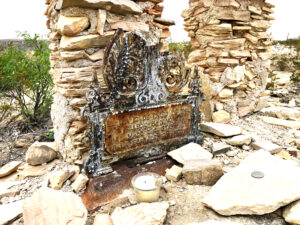 Marked graves date back to 1903, but burials began back when the dangerous process of mercury mining began here. Mine collapses, mercury poisoning and later influeza and tuberculosis epidemics populated the cemetery.
Marked graves date back to 1903, but burials began back when the dangerous process of mercury mining began here. Mine collapses, mercury poisoning and later influeza and tuberculosis epidemics populated the cemetery.
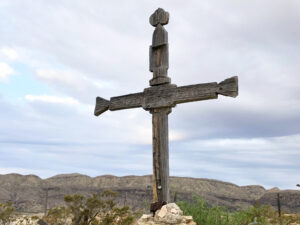 Conservative estimates say that there are about 400 burials in the cemetery: Men, women, and children. Miners, goat herders, artists, housewives, ranch hands, cooks, bootleggers, day laborers, war veterans, clergy, even murder victims. About 90 percent of those who rest here are of Hispanic heritage.
Conservative estimates say that there are about 400 burials in the cemetery: Men, women, and children. Miners, goat herders, artists, housewives, ranch hands, cooks, bootleggers, day laborers, war veterans, clergy, even murder victims. About 90 percent of those who rest here are of Hispanic heritage.
Those that were victims of mining accidents were sometimes laid to rest in coffins made by the companies they worked for.
Many of the gravesites have lost their markers, or they have simply become illegible over time. Some have all but vanished due to relentless weather and relic hunters.
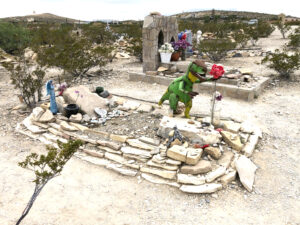 Others reflect the character and sometimes humor of those who they remember. A Hobbit hole, a metal T-Rex, and epitaph of “Another good man done gone.” They all lure visitors into slowing down to take in the silent stories of the cemetery.
Others reflect the character and sometimes humor of those who they remember. A Hobbit hole, a metal T-Rex, and epitaph of “Another good man done gone.” They all lure visitors into slowing down to take in the silent stories of the cemetery.
The Mining town was abandoned in the 1940s. That’s when Terlingua became a true ghost town . . . years before it became home to artists and others who tired of life in overcrowded communities . . . and eventually the visits of countless curious tourists on their way to Big Bend.
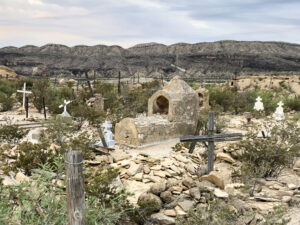 Visitors are fascinated by the variety of burial markers and folk art memorials, and of course – the stunning View of Chisos Mountains and Sierra del Carmens as a backdrop.
Visitors are fascinated by the variety of burial markers and folk art memorials, and of course – the stunning View of Chisos Mountains and Sierra del Carmens as a backdrop.
Each year an elaborate celebration takes place here to mark Dia de los Muertos, or Day of the Dead, giving the living a chance to honor and remember the departed.
Walking into Terlingua cemetery is like walking into a time warp. If a visit to this fascinating place doesn’t make a person stop and reflect . . . I’m not sure what would.
Join me for a stroll through the grounds of this historic cemetery in my Youtube video of the cemetery HERE.
Mustangs Stampede through Texas History
Galloping across an urban plaza in Las Colinas, these larger-than-life bronze mustangs represent a unique piece of Texas history . . . and look gorgeous at the same time. The scale alone is awe-inspiring.
Of course people think of horses when they think of the Lone Star State, but these beauties are wild mustangs – descendants of the Spanish Andalusians that were used in the area by Spanish explorers in the 1500s. The word “Mustang” derives from the Spanish words mesteno, which means “wild” or “stray.”
They enabled the conquistadors to move faster across the land and carry more equipment.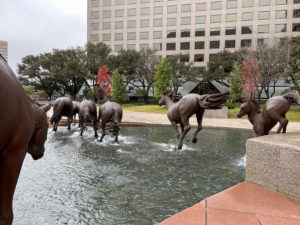
Over half of the human on the expedition had died before they came down the Trinity River, and the horses were set free before they left to return to their home country. The resulting herds were used by the Caddo tribe in East Texas in the 1600s. Two hundred years later, large herds of mustangs ran freely over the Texas plains. They were the favored horses used by the Pony Express and to drive Longhorns to market.
An estimated 1 million wild horses used to roam Texas!
Created by wildlife artist Robert Glen, who lives in South Africa, the statue was dedicated in 1984. The statues took eight and a half years to create, which includes one year just for the installation process! Stampeding down a 400-foot river setting in a large pink granite plaza, it’s one of the largest equestrian sculptures in the world. Composed of a pair of stallions, five mares and two colts, the details are so exquisite you can almost hear them whinny as they toss their heads. Small fountains at the base of their hoofs create the illusion of splashing as they run.
Visit the Las Colinas Mustangs and their free museum at 801 W. Irving Blvd in Irving, Texas.
BBQ Texas Style at the Chainsaw Massacre Gas Station
I love a scary movie. Not a gory movie or one of the blood-guts-n-gore type. Just scary. Like ‘The Others,’ “Sixth Sense,” or the version of “The Changeling” with George C. Scott. Scare me with a suspenseful story, not with a splatter of blood.
But even I admit what a cult horror classic the 1974 version of “The Texas Chainsaw Massacre” has become. And what could be more fun than visiting a film location of a famous scary movie in time for Halloween? This one happens to be on a backroad in Texas.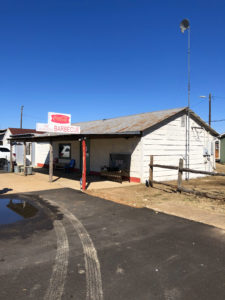
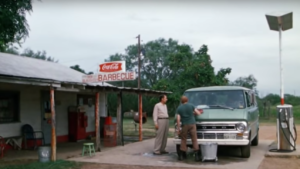
If you’re familiar with the movie, then the Last Chance Gas Station, also known as Bilbo’s Texas Landmark, is sure to send a shiver up your spine. In the film the station and BBQ joint was run by the character of Drayton Sawyer, the head of a family of cannibals who offered their own specialty of human chili to unsuspecting customers. Mmmmmm.
About four miles south of Highway 71 in Bastrop, the retro-renovated station used in the film is now known as the We Slaughter Barbecue. But don’t worry, if you stop for lunch you’ll be served much more traditional brisket plates than the previous fictional owner offered. In fact, it’s really good barbecue, so you can check out the fun location and check lunch off your list at the same time.
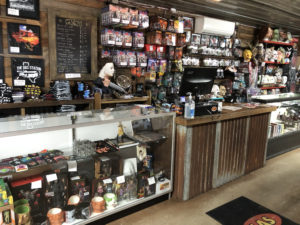
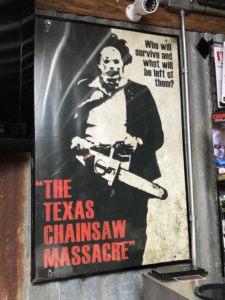 Any cult classic lover will have a heyday inside the gift shop filled with horror memorabilia, toys, shirts and souvenirs.
Any cult classic lover will have a heyday inside the gift shop filled with horror memorabilia, toys, shirts and souvenirs.
The owners opened the location as a “bed and barbeque” for those who dare to stay past sundown. Guests can sleep in one of the small cabins out in back of the station. Each cabin sleeps three adults . . . so no one has to brave a night at the location alone. And of course the tiny cabins are decorated with blood red walls . . . maybe so stains won’t show?
At the time I’m writing this, the cabins are $129 per night, or slightly less if you’re brave enough to stay multiple nights.

 Outside of the station sits an abandoned van that is nearly identical to the van owned by some of the unfortunate customers in the movie, and the owners have recently acquired the actual Black Maria semi truck from the original Texas Chainsaw Massacre as well.
Outside of the station sits an abandoned van that is nearly identical to the van owned by some of the unfortunate customers in the movie, and the owners have recently acquired the actual Black Maria semi truck from the original Texas Chainsaw Massacre as well.
If you’re planning to attend the “Cult Classic Convention” in Bastrop this coming March (2023), this would be an ideal place to stay. But be sure to send a postcard to let loved ones know where you are . . . just in case they have to search for you later.
Location:
1073 State Highway 304
Bastrop, Texas
www.texasgasstation.com
Historic Texas Courthouse Ghost Linked to Murders
I was considering what my first October post should be this year . . . a ghost story, a fascinating “story behind the stones” of old cemeteries, a thrilling story from Texas history, or a historic site. Why not all of the above? If you travel to Coryell County, it’s all in one place.
Workers at the Coryell County Courthouse in Gatesville have felt an ‘other-worldly’ presence for years: cold breezes through the county clerk’s office, an occasional firm tap on the shoulder and even furniture being re-arranged in the middle of the night. Locals have dubbed the courtly ghost ‘Elroy’ because they aren’t certain who it actually is. But there are theories that the spirit can’t leave the courthouse because of a connection to a sensational 1909 murder right in the courtroom.
It happened over 100 years ago.
In 1908 a 19-year-old young woman named Verna Mabel Ware was assaulted by a 20-year-old-man named John J. Hanes in the Gatesville area. It was alleged that Hanes – reportedly studying pharmacy – drugged chocolates he gave to the girl at a spring picnic and then took advantage of her, resulting in the birth of a child.
He was charged with seduction, as the word ‘rape’ wasn’t used at the time because it was thought to be too harsh.
Hanes reportedly had several male friends lie on the witness stand during his trail.
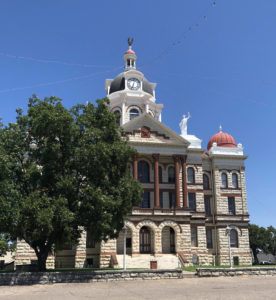 It’s apparent that the behavior wasn’t unusual at the time, because before his own trial proceedings were finished he sat in the courtroom on February 2, 1909 watching another man named Wiley Mulhouse who was being prosecuted on the same charge. Because the jail was in the basement then, Hanes would have been returning to his cell at the end of the day. The two trials had split the town into separate contentious sides.
It’s apparent that the behavior wasn’t unusual at the time, because before his own trial proceedings were finished he sat in the courtroom on February 2, 1909 watching another man named Wiley Mulhouse who was being prosecuted on the same charge. Because the jail was in the basement then, Hanes would have been returning to his cell at the end of the day. The two trials had split the town into separate contentious sides.
Both Ware and Hanes came from respected farming families in the area and had many friends.
Verna, distraught with her situation, stood in the rotunda with her brother Ezra looking through the plate glass window that separated them from the courtroom. Fearing she would never see justice, she decided to take action herself.
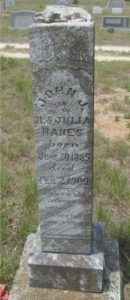 She pulled a 38 caliber revolver from her purse and shot through the glass, hitting Hanes three times in the back. He died instantly. As people in the courtroom scattered, Ware continued to fire hitting James J. Smith (age 68) in the head, Dave Ross (age 48) in the arm and back and A. P. Wiley, Jr. in the leg. Only Wiley would survive his wounds.
She pulled a 38 caliber revolver from her purse and shot through the glass, hitting Hanes three times in the back. He died instantly. As people in the courtroom scattered, Ware continued to fire hitting James J. Smith (age 68) in the head, Dave Ross (age 48) in the arm and back and A. P. Wiley, Jr. in the leg. Only Wiley would survive his wounds.
Initial newspaper accounts reported that the three other wounded men were merely spectators in the courtroom, but local lore hints that they may have been character witnesses for Hanes.
Judge Arnold maintained composure during the incident and directed officials to take Ware downstairs to the jail. Physicians who visited her in her cell declared that she was in a “critical condition of nervous collapse.”
After a few days in jail formal charges were made of three counts of murder and one for carrying a pistol. Her bond was set at $7,500, and was paid by citizens of the community who sympathized with Ware and her situation.
The trail began late in 1909 and continued until February when she was declared not guilty due to temporary insanity. Reporters wrote that at times during the proceedings the jury and spectators were moved to tears. She did have to pay a fine for having the gun, however.
 So who is the courthouse ghost? Perhaps it is Hanes who was positive he would get away with his transgression, and now is trapped in the courthouse. Perhaps it’s the spirit of someone else. We may not ever know for sure.
So who is the courthouse ghost? Perhaps it is Hanes who was positive he would get away with his transgression, and now is trapped in the courthouse. Perhaps it’s the spirit of someone else. We may not ever know for sure.
But if you visit the Coryell courthouse, be prepared to feel an unseasonable chill in the air.
Now, I’m curious…are you more likely to visit the courthouse because of it’s beauty, or because of its ghost?
Incidentally….
-
The jury for the Mulhouse case returned a few days later and returned a guilty verdict with a sentence of two years.
-
The three shooting victims are buried in area cemeteries, with nothing on their markers to denote their newsworthy demises.
-
In the 1990s a local artist even depicted the courthouse in an oil painting with a shadowy figure peering out of a second floor window over Main Street.
-
The year after her trial, Verna Ware married W.R. Eck who adopted her daughter Opal. He unfortunately passed away in 1918.
-
Ware remarried, but it didn’t last. She and Opal moved to Utah were Verna passed away in a rest home in 1973.
-
And the courthouse? It’s well worth visiting with or without the ghost in attendance. The Beaux Arts beauty was built in 1897-1898 of red and white sandstone from a design of architect Wesley Clark Dodson.
Visit Texas’ Own Hank the Cowdog
“Every ranch pickup ought to have at least one cow dog in the back,
barking at every passing truck.” – Hank the Cowdog, Ranch Life Book No. 1

